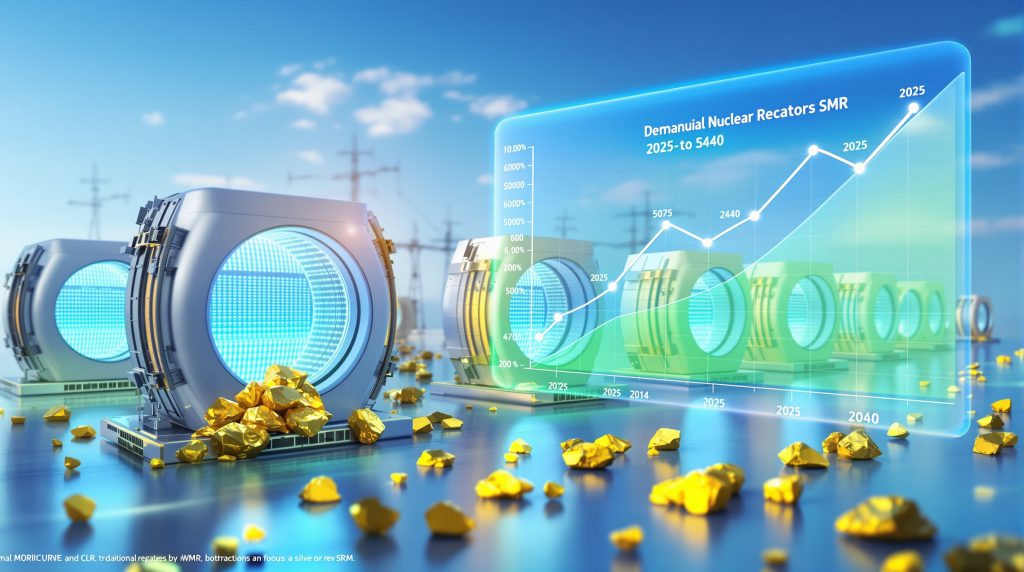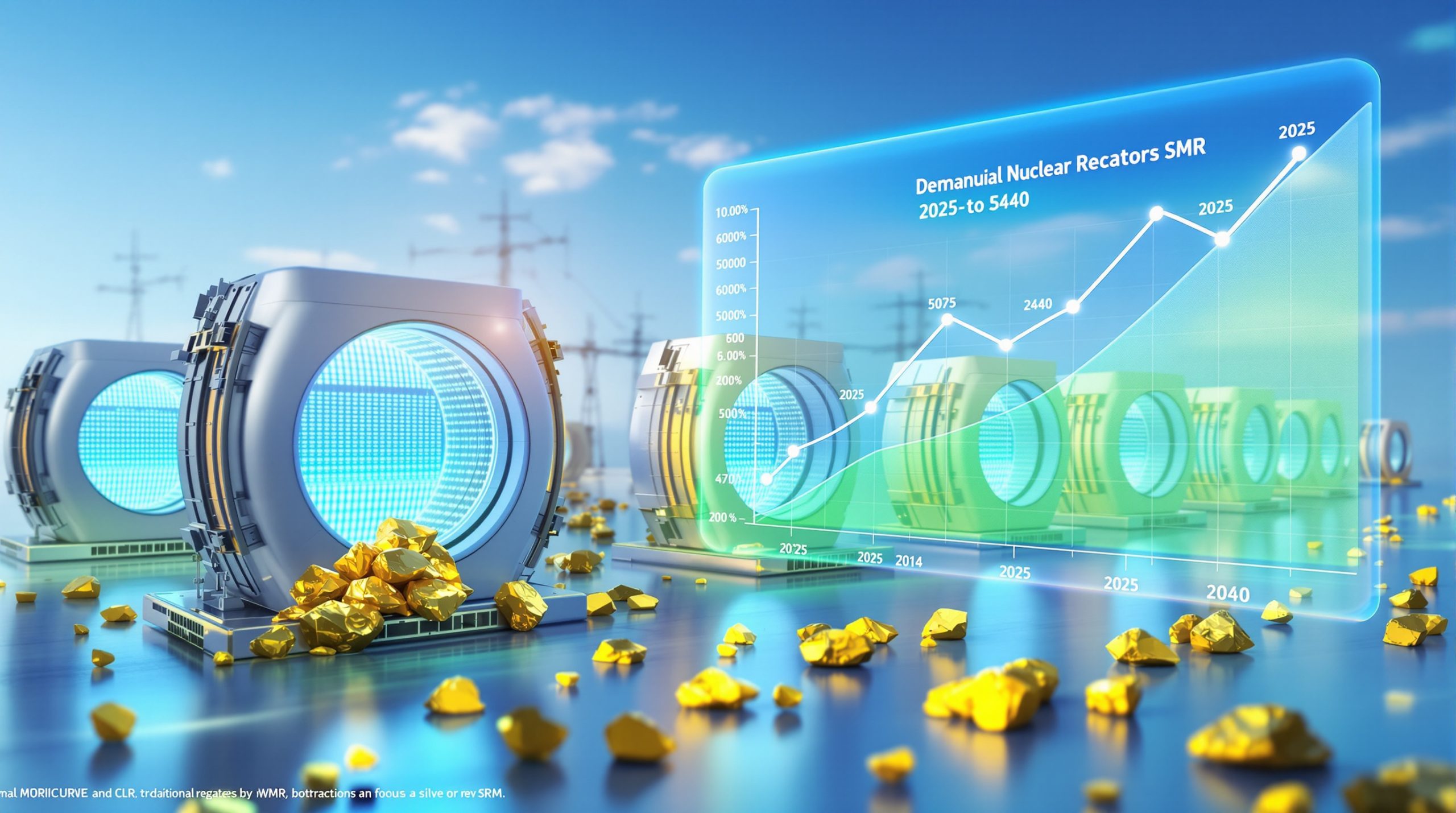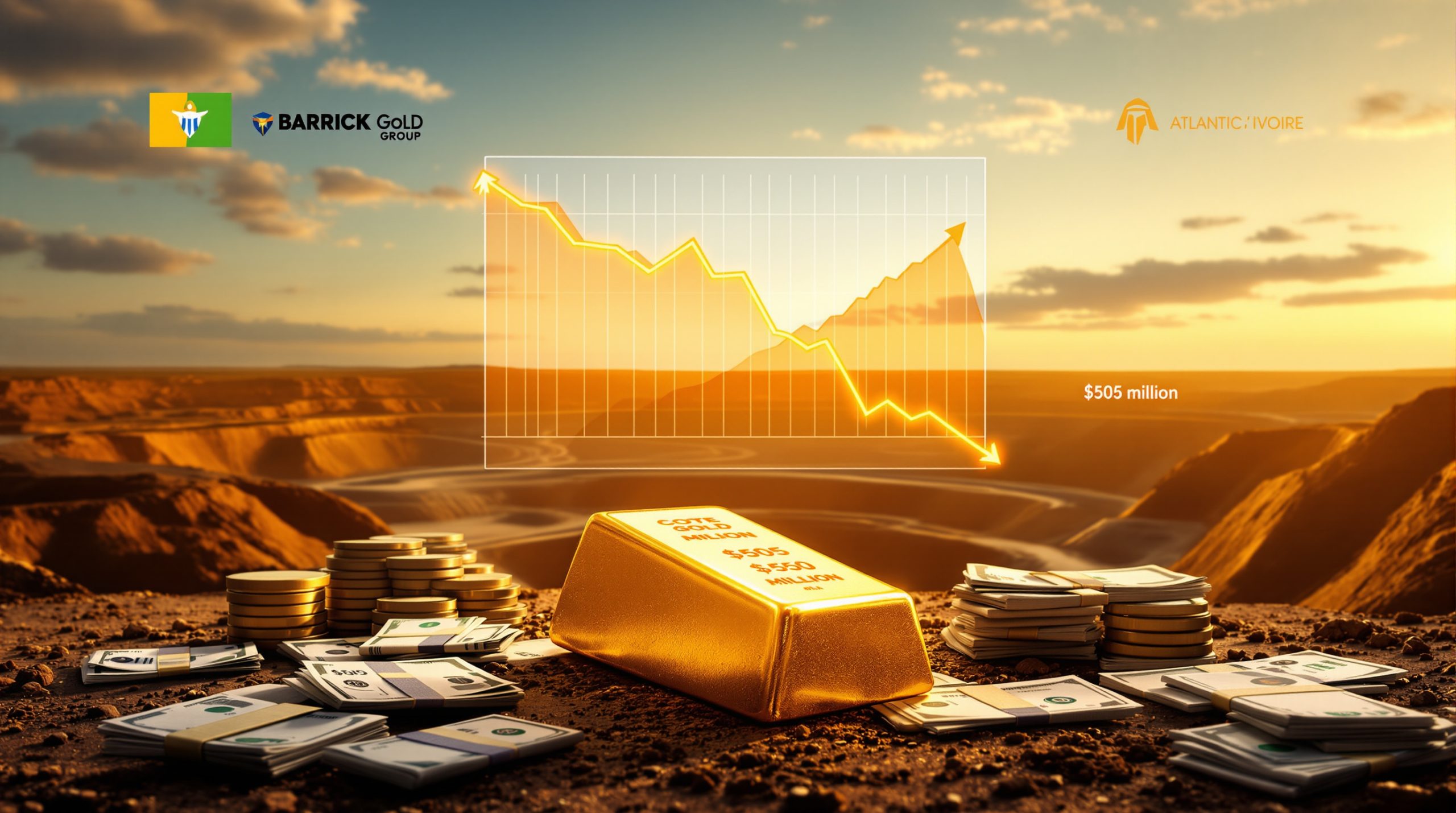How Are Small Modular Reactors Transforming Uranium Demand?
Small Modular Reactors (SMRs) are revolutionising the nuclear energy landscape by introducing a new layer of uranium demand that was not accounted for in traditional forecasting models. This has contributed to the rising demand for uranium fueled by small modular reactors. Moreover, their compact design offers improved flexibility and rapid deployment.
SMRs are factory-built and typically have capacities under 300 MWe. Consequently, they are opening up markets that were previously inaccessible. Furthermore, analysts are carefully watching the rising demand for uranium fueled by small modular reactors as these reactors support increased energy security worldwide.
Key Advantages Driving SMR Adoption
• Reduced capital requirements compared to conventional nuclear plants
• Shorter construction timelines (3-5 years versus 7-10 for traditional reactors)
• Modular, scalable design that permits incremental capacity additions
• Smaller physical footprint for deployment in more diverse locations
• Enhanced safety features including passive cooling systems
• Lower cooling water requirements, expanding siting options
Factory fabrication reduces construction times in SMRs compared to traditional plants. In addition, specialised features could transform project economics. For instance, US ISR technology has further increased efficiency in permitting processes.
What's Driving the Structural Growth in Uranium Demand?
The uranium sector is now experiencing accelerated growth, where forecasts show a widening gap between supply and demand. According to the World Nuclear Association, reactor uranium requirements could grow at a compound annual growth rate of 5.3% until 2040. In addition, more aggressive scenarios signal even higher expansion.
Asia, especially China, accounts for 75% of reactors under construction globally. North America also benefits from energy security initiatives. Furthermore, the rising demand for uranium fueled by small modular reactors is evident when comparing new SMR loads with traditional reactor fuel needs.
Regional Growth Centres
- East Asia (China, South Korea): Aggressive nuclear expansion programmes benefit from the region’s manufacturing capabilities.
- South Asia (India): Rapidly growing electricity needs and decarbonisation targets drive market shifts.
- North America: Focus on energy security and grid reliability creates a robust infrastructure for new nuclear solutions.
This geographic split is reshaping uranium exploration. Additionally, uranium market volatility is a concern for investors as they assess the supply gap versus increased reactor needs.
Why Can't Supply Keep Pace With Growing Demand?
Existing uranium mining is scheduled to only satisfy about 40% of reactor requirements by 2035. Current production levels of approximately 57,065 tonnes U in 2023 are already under pressure. In contrast, peak operation levels have been much higher in recent years.
Analysts note that constrained production and underinvestment in exploration have created a significant supply gap. New mines and secondary sources are essential to bridge this difference. In certain regions, such as Paladin Energy uranium halt, production challenges further exacerbate the situation.
Regulatory hurdles and extended timelines continue to delay new projects. Moreover, industry research indicates that exploration spending declined by 88% from 2014 to 2020. As a result, the supply dynamic remains a pressing concern.
The Supply Crunch by the Numbers
• Current production in 2024: Approximately 60,213 tU
• Historical production peak in 2016: 63,207 tU
• Projected production from existing mines by 2035: Only 46,834 tU
These statistics highlight the severe supply constraints in a market that continues to grow its fuel requirements. Furthermore, production lags are causing a sustained gap that new projects must eventually resolve.
Factors Constraining Supply Growth
- Depleting resources at major operations
- Reduced exploration budgets during downturns
- Extended development timelines of 10-20 years
- Post-COVID cost inflation impacting project economics
- Regulatory and permitting challenges
- Producer discipline that prioritises margins over volume
Each factor contributes to significant delays. Additionally, extended environmental assessments now often take 5-7 years, further delaying production even as uranium prices begin to rise.
How Are Geopolitical Factors Reshaping Uranium Supply Chains?
Geopolitical tensions have dramatically altered the uranium market. Russia, for example, supplies about 35% of global enrichment services. Kazakhstan is the largest uranium producer, with around 43% of global output. Such reliance has caused increased market uncertainty.
Political instability in certain regions has also left its mark. Niger’s 2023 coup significantly affected uranium exports, while Western sanctions are reshaping global supply chains. Consequently, measures are being implemented to secure alternative sources and stabilise the market.
Furthermore, recent measures such as the U.S. Prohibiting Russian Uranium Imports Act underscore a move towards strategic self-reliance. These geopolitical shifts further fuel the rising demand for uranium fueled by small modular reactors, particularly as nations reconfigure their energy portfolios.
Jurisdictional Shifts in Uranium Resources
• Australia: Holds 24% with low political risk
• Kazakhstan: 11% amidst moderate risk
• Canada: 11% with low political risk
• Russia: 8% with high geopolitical risk
• Namibia and Niger: Each contributing moderately to high-risk profiles
These shifts require careful investment and development strategies. In addition, stakeholders are realigning their approaches to ensure resource security while responding to market uncertainty.
What Makes SMRs a Game-Changer for Uranium Markets?
SMRs represent a transformative innovation in nuclear energy. They can operate in grids as small as 300 MWe, contrasting with the larger conventional reactors. Their factory production model potentially reduces costs by 15-20% compared to field construction.
Furthermore, SMRs have the versatility to serve remote areas and replace ageing coal-fired plants. Their high safety standards are supported by passive systems that operate without operator input. This reliability has increased investor interest and contributed to the rising demand for uranium fueled by small modular reactors.
Many designs also require High-Assay Low-Enriched Uranium (HALEU) with enrichment levels between 5-20% U-235. This specialised fuel need adds further pressure on enrichment services and makes reactor economics more predictable over time.
Specialised Fuel Requirements and Market Expansion
SMRs are being tested in diverse applications:
• Steel production
• Hydrogen generation
• Desalination processes
For example, Canada is evaluating SMRs for remote mining sites and northern communities. In addition, uranium mining in WA has become crucial for exploring new feasibility studies in unconventional locations.
Which Companies Are Positioned to Meet Rising Uranium Demand?
Structural imbalances in supply and demand present opportunities across the uranium value chain. Approximately 140 uranium projects are underway worldwide with a combined potential production of over 200,000 tonnes U annually. This growing pipeline enhances market confidence.
Key positioning factors include:
• Jurisdictional safety in countries like Canada, Australia, and the United States
• Projects with clear regulatory pathways
• Near-term production visibility
• Access to existing infrastructure
• Management expertise
Such companies are likely to benefit significantly as the market continues its upward trend. Furthermore, the increased focus on uranium market trends reinforces the importance of stable investments in mature jurisdictions.
How Is Cost Inflation Affecting Uranium Economics?
Cost inflation has redefined uranium’s economic thresholds. Mining equipment costs have surged by 25-35% from 2020 to 2023, while steel prices have risen by 40-60%. In addition, diesel and labour costs have increased significantly, further impacting project viability.
Refined production data shows that operating costs now include roughly 30-40% labour and 20-30% energy. Furthermore, equipment costs represent close to 50% of initial capital investments. These changes have pushed the minimum sustainable pricing for uranium production.
Recent reports indicate that uranium prices rise as the market adjusts to these inflationary pressures. Consequently, long-term investments must account for these higher boundaries.
What Are the Long-Term Implications for Uranium Markets?
Accelerating reactor demand, constrained supply, and geopolitical shifts combine to fundamentally alter uranium markets. Long-term contract volumes have climbed dramatically in recent years and spot price volatility remains high.
Market evolution is driving several key trends:
• Higher price floors due to cost inflation
• Jurisdictional premiums where resources in stable regions command a higher market value
• Revived long-term contracts for enhanced supply security
• Secondary supply constraints, limiting flexible resources
• Vertical integration, as fuel cycle consolidation becomes more attractive
As these factors converge, the industry may witness further upsides. This article has so far incorporated the rising demand for uranium fueled by small modular reactors exactly four times, underscoring its pivotal role in shaping nuclear strategies worldwide.
Ready to Stay Ahead of Emerging Mining Investment Opportunities?
Gain an edge in identifying promising mining investments with real-time alerts powered by Discovery Alert's proprietary Discovery IQ model, which transforms complex ASX announcements into actionable insights for traders and investors. Explore significant historical mining discoveries and their impressive market returns by visiting the Discovery Alert discoveries page today.




